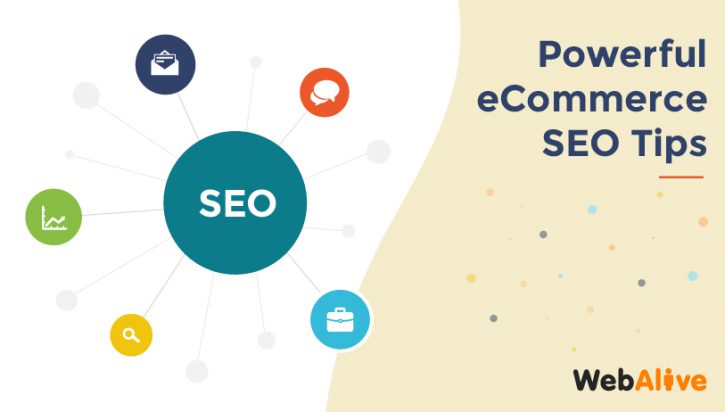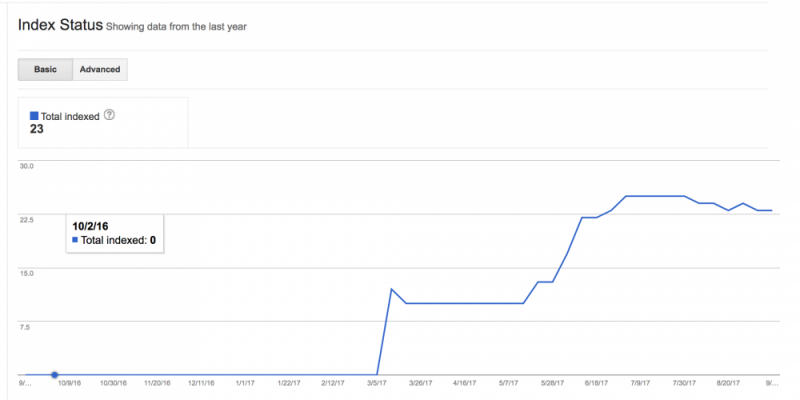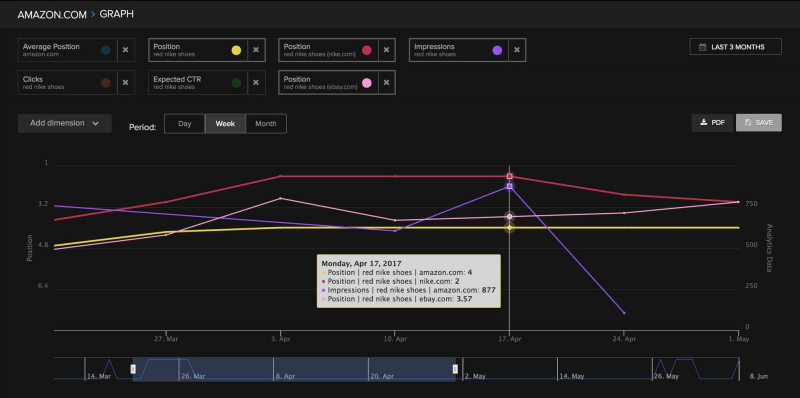
10 Most Powerful Ecommerce SEO Tips to Increase Sales
You’ve chosen a niche, getting your products, your web designer has done a splendid job at pimping your website, and your online store is all setup. You’re ready to start selling!
Only, you can’t sell to non-existent customers. Unless you start getting customers through the door, your online shop simply won’t grow.
How to do this via SEO when you’re up against established online stores that have a bigger budget than you?
In this article, we show you how to get more eyeballs on your page with the most powerful ecommerce SEO tips that don’t cost a fortune to implement.
How important is SEO for ecommerce?
There are a few ways to drive traffic to your ecommerce website so that people can find you, including Facebook ads. However, as SearchEngineLand points out, the organic search continues to be one of the best sources of revenue for many ecommerce stores – if not the best.
In other words, if you don’t fine-tune your SEO campaign, you’re as good as leaving money on the table. Instead of finding your store on Google, shoppers will find your competitors.
SEO can be confusing if you don’t know what you’re doing. You might be a fine seller, but unless your SEO knowledge is golden, it will let you down by not even giving you the chance to start closing sales.
So let’s take a look at the ten most powerful ecommerce SEO tips that will help you get customers onto your page and into the checkout.
1. Be original with your title tags
On-page optimisation is essential for all the SEO work you do on your pages in order to improve rankings.
Example of an SEO-optimized header
The best thing about on-page optimisation? It’s in your hands to control (unlike backlinks, for example). As such, there isn’t much of an excuse not to improve it.
2. Optimise your keywords
There are numerous different places you should be implementing your main keywords on your site. These include:
- Headers and sub-headers
- Product descriptions
- Meta tag
- URLs
- Paragraph copy
- Alt tags
- Image descriptions
URLs are easy to neglect, but they’re a great place to include your keyword. And while it’s important to optimise images and meta tags, you should be wary of keyword stuffing. Include two keywords at the most, but only if they fit naturally. Otherwise, one keyword can suffice.
Example of a strong meta-tag with keywords
Related article: A Complete Guide to SEO Friendly URLs
3. Site structure
Site structure refers to the architecture of your website. If you have flat architecture, excellent. If you don’t, you need to get one.
What does this mean? A flat architecture is one that requires very few – one at the most, if possible – links to get a customer from your landing page to a product page. As such, it extracts as much link juice as possible.
Essentially, you want to link from your landing page to your product pages – and vice versa – as much as you can. In doing so, you’re building a simple site structure, and you’re telling Google that everything is linked up and connected.
Site structure needs to be optimised by your ecommerce web designer before your site goes live if you’re to unleash all of its SEO potential. If you think you need to redesign your site, you can find some tips on this website redesign checklist.
4. Website speed
Website speed is super important for on-page optimisation. We’ve heard time and time again the stats that demonstrate how conversion rates are given a hammering by slow page loading times.
To test how quickly your site is loading, you can use a tool such as Google’s PageSpeed Insights.
Site speed overview from Google Analytics
Images are almost always the biggest reason a site takes ages to load. Make sure all the images of your products are compressed before you upload them.
5. Improve your internal site search
Not all ecommerce store owners are optimising their internal site searches, presumably because they assume that it doesn’t affect their ranking. It does.
Firstly, it’s a very good idea to enable tracking of your ecommerce store’s site search. Doing this lets you see the keywords site visitors are searching for on your website.
Secondly, you should count the most popular searches. Doing this means you can double down your SEO efforts on the most popular products to make them even more profitable.
Thirdly, you need to make sure that your search pages are optimised so that site visitors are able to find what they came here for. Or does a simple typo mean the search results aren’t at all what they wanted?
Lastly, once you know what keywords your visitors are tapping into the search bar, you can then tweak your tags so that the right results come up. This will boost sales.
6. Build backlinks
Backlinks are an incredibly important off-page SEO weapon. Getting backlinks to any site isn’t easy – but it’s probably even trickier for ecommerce websites.
However, it’s as simple and as exhausting as this:
Find your ideal client, before understanding what content you need to create. Then, produce awesome content in the form of blogs that you promote the living heck out of. Share them on social media, and encourage others to share them.
The more you do this, the more your content will get noticed by the right people who share it.
Another way to build backlinks is to offer to guest-post on an influencer’s blog. Kindly ask if you can write a blog for their page, and then link to your own site. Make sure when you do this that the anchor text is SEO optimised.
7. Eliminate duplicate content
The thing with an online store is that thousands of product pages can mean thousands of separate URLs.
And if Google indexes ALL your URLs, your website might get flagged as spam.
To see how many indexed pages you’ve got, open up Google Search Console and run an Index Status report. If you’ve not done this before, you might see that you’ve got an insane amount of indexed pages.
Google Search Console
This problem can harm your rankings, but it’s fixable. Simply identify the biggest culprits (usually these are category pages), and then add to your dynamic pages a no index, follow the meta robots tag.
The next time Google crawls them, they will tumble out of the index.
8. Write a blog
Our eighth tip is perhaps one that very few ecommerce stores want to see: write a blog.
Writing a blog does indeed take time. You not only need to come up with fresh content ideas, but you also have to spend time writing. You can outsource this if you have the funds, of course.
Google loves fresh content, but the most convincing reason to start a blog for your ecommerce store is to get the best out of keywords.
You can add keywords to your product descriptions, alt-tags, and URLs… but there is only so much you can do. You’re limited to how many keywords you can use and optimise until you start a regular blog.
You can use a keyword tool such as Google’s Keyword Planner to find relevant keywords your customers are searching for on Google. Then, you can craft compelling articles that include these keywords while adding links to your products, as well as a strong Call To Action at the end of each blog post.
Adding a blog is a standard practice among online businesses. Not only will it help your rankings, but you can share blogs on social media to drive even more traffic.
Of course, as a store owner, you need to be super specific about the keywords you use. A good idea is to do what affiliate marketers do. Open up an SEO tool you use to plan your keyword campaigns, such as Nightwatch.
This will help you boost your SEO efforts by helping you pick and predict the right targeted and most relevant keywords that are guaranteed to return results – as well as to see how are your competitors doing.
Comparison of historical rankings, CTR, and traffic performance of “red Nike shoes” for Amazon and its competitors in Nightwatch
It crunches Google Search Console and Adwords data for you, making it easier to understand the search volume for your keywords as well.
For example, if you’re in the video editing niche, an article about which laptops are best for editing would make a sound, keyword-optimized article. As such, you can use Nightwatch to see what the search volume is for a keyword like “ecommerce SEO company” or “best laptop for editing.”
Related article: 5 Reasons Why an Onsite Blog is Essential for Your Website
9. Write thoughtful product descriptions
Product descriptions are essential for SEO as they can maximise your chances of gaining an impressive search rank with improved user experience and better conversion rates.
Write your SEO-friendly product description with your ideal customer in mind, not the search engine web crawlers. Add a benefit-driven description including key features so that your potential gets a clear picture of the products when they read the descriptions. Consider putting humour, honesty, consistency and clear instruction as well.
Identify some good keywords, and whenever applicable, implement your targeted keywords wisely. For example, you can try using your keywords in places like alt image tag, product description title, body copy or page URL.
Optimising product descriptions for the right keywords will get your selling items in front of the right people at the right time. But be sure not to overstuff the descriptions with keywords.
Create your description with CTAs like “Add to Wishlist”, “Add to Cart”, or “Purchase Now” to include an action you want your customers to take by encouraging them to convert. Try to make your product description content 100% unique. You can also use personalisation by offering suggestions or a specific language.
10. Optimise for rich results
In rich results, instead of a website title and meta description, users can see images, product ratings, cooking times, FAQs and some additional information like price, colour or availability. These appear at the top of the result page and are one of the first things users see on a search result page.
Due to the interactive and visual qualities, visitors are more probably to click on them, which leads to the improvement of your organic click-through rate. And this makes rich results important for SEO.
So, to optimise your pages to make them eligible for rich results, pick the rich result type that best fits your site, optimise and implement your product structured data well, and run a test to set up your structured data on your product pages. And with the appropriate structured data, you will be eligible to have products displayed for sale directly from search results.
Conclusion
These are ten of the most powerful ecommerce SEO tips. Remember that both off-page and on-page SEO matters, and that when it comes to an online store, it’s super important that you take advantage of things such as product descriptions and URLs to use as many keywords as possible. Good luck!
You read a lot. We like that
Want to take your online business to the next level? Get the tips and insights that matter.






